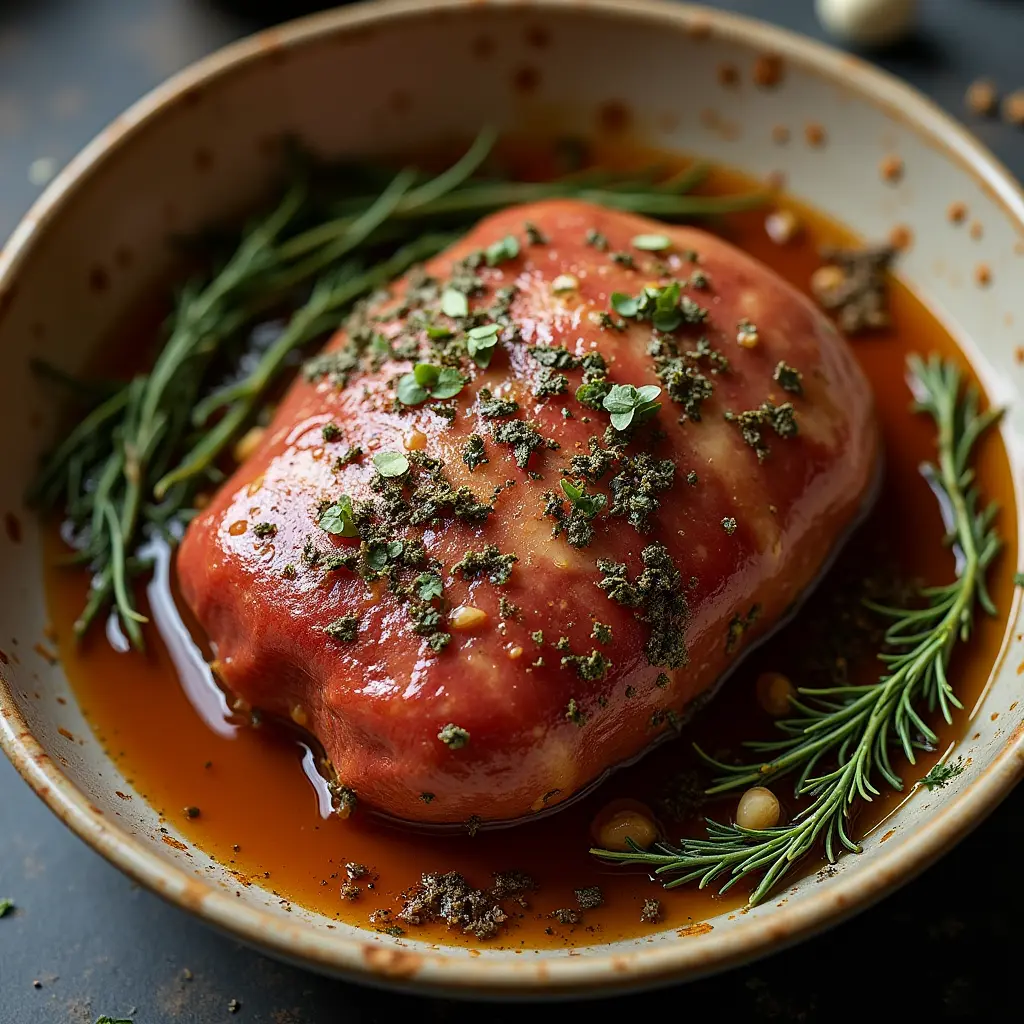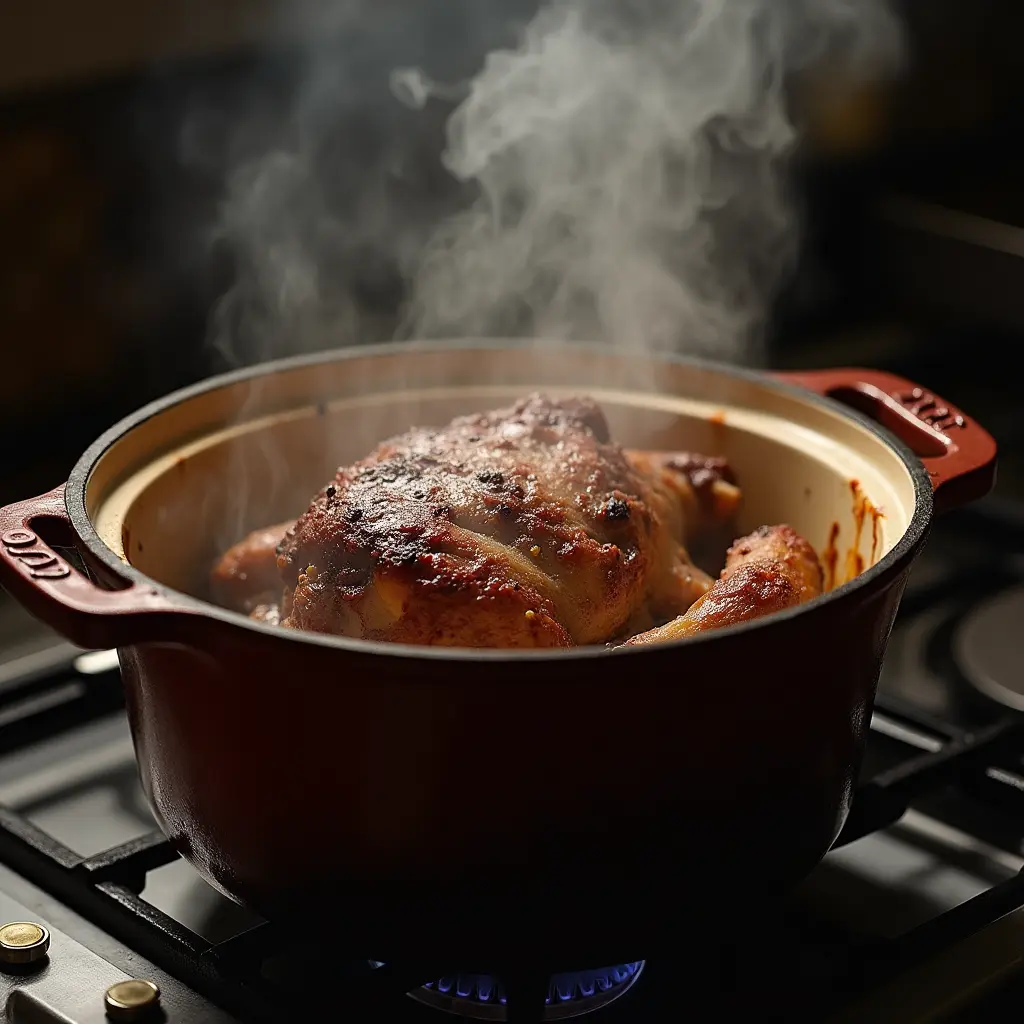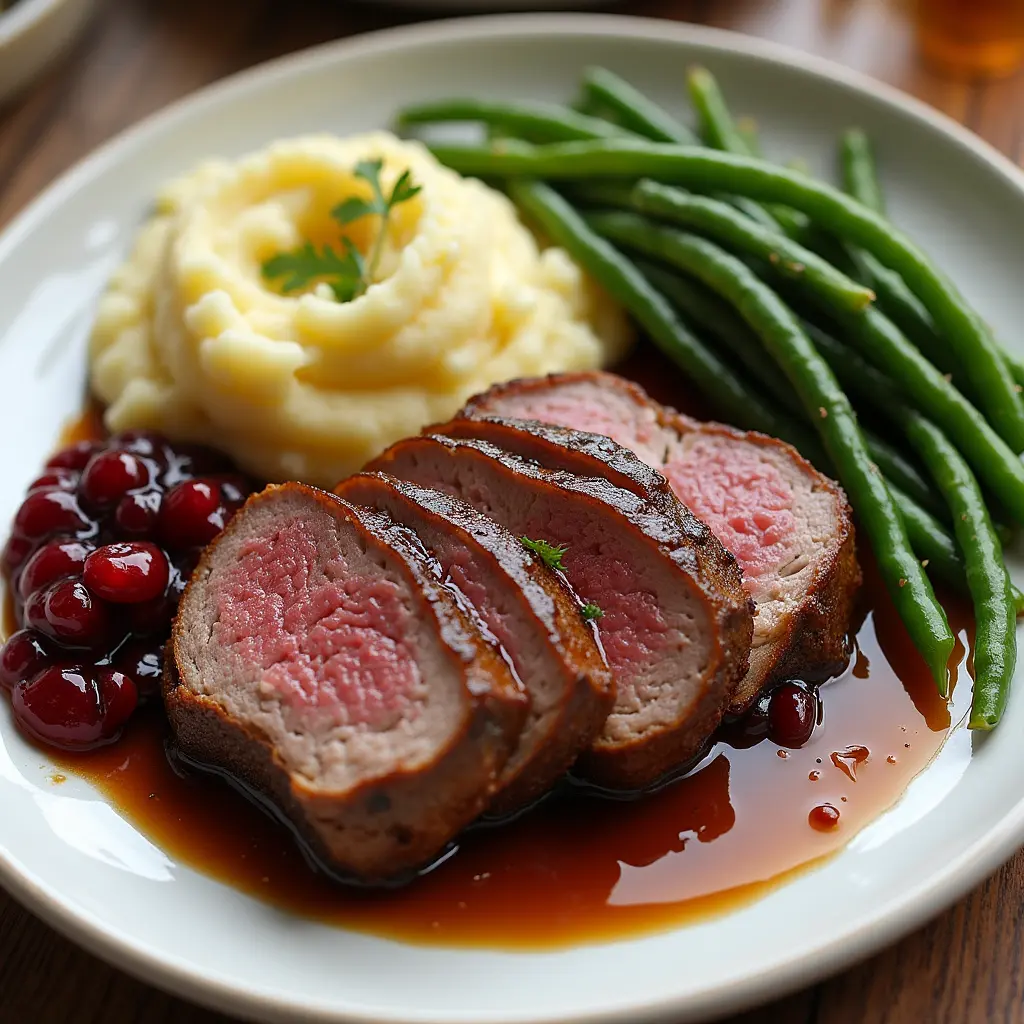Are you tired of tough, dry deer meat? You’re not alone! Many hunters and home cooks struggle to make venison as tender and delicious as it deserves to be. But here’s the good news: with the right techniques, you can transform your deer roast into a mouthwatering masterpiece!
Did you know that venison is one of the leanest meats available, packed with protein and nutrients? The key lies in preparation and cooking methods. In this article, we’ll share 3 game-changing secrets to creating the best deer roast recipe ever. Whether you’re a seasoned hunter or just love experimenting in the kitchen, these tips will elevate your cooking skills and impress everyone at the table. Ready to get started? Let’s dive in!
Table of Contents
Why Venison Roast is Worth Trying
If you’ve never tried venison roast before, you’re missing out—big time. Trust me, I was skeptical at first too, but once I got the hang of it, I was hooked. Let’s break down why this dish deserves a spot on your dinner table.
Nutritional Benefits of Deer Meat
Here’s the kicker: deer meat is basically a superfood in disguise. Check out these perks:
- Lean Protein Powerhouse : Venison has way less fat than beef, making it perfect for anyone watching their calorie intake.
- Packed with Iron : Ever feel sluggish? Adding venison to your diet can help boost your energy levels naturally.
- Rich in B Vitamins : These little guys support brain health and metabolism. Who doesn’t want that?
When I swapped my usual beef roast for venison, I noticed I felt lighter and more energized. Like, who knew eating healthier could actually feel good?
Flavor Profile: What Makes Venison Unique
Now, let’s chat flavor because this is where venison really shines. Here’s the lowdown:
- Earthy and Bold : Venison has a deeper, richer taste compared to beef. It’s like…nature in a bite.
- Pairs Well with Spices : Its robust flavor holds up beautifully against bold seasonings like rosemary, garlic, and thyme.
But heads up—it’s not forgiving if overcooked. My first attempt? Total disaster. Dry as chalk. But hey, we live and learn, right?
Common Challenges When Cooking Deer Roast
Cooking venison comes with its own set of hurdles:
- Leanness = Prone to Drying Out : Without much fat, it needs extra care. Marinades are your best friend here.
- Strong Flavor Can Be Intimidating : If you’re used to mild meats, venison might take some getting used to.
Pro Tip: Use a meat thermometer! Aim for 145°F (medium-rare) to keep it juicy.
So, ready to give venison roast a shot? You won’t regret it!
Secret #1: Proper Preparation Techniques
Let me tell ya, the secret to a killer deer roast starts way before you even fire up the oven. It’s all about prep—getting the meat ready to shine. I’ve messed this up more times than I care to admit, but trust me, once you nail these steps, you’re golden.

Trimming Fat and Silver Skin
First things first: grab a sharp knife and channel your inner butcher. Venison has something called silver skin , which is this tough, silvery membrane that runs through the meat. If you don’t trim it, your roast will end up chewy—not exactly the vibe we’re going for.
Here’s how I tackle it:
- Lay the meat on a cutting board and inspect it closely.
- Use short, precise cuts to remove any visible silver skin or excess fat.
- Don’t overthink it—if you miss a tiny bit, it’s not the end of the world.
Pro Tip: Keep a bowl nearby for scraps—it keeps your workspace clean and makes cleanup easier.
Marinating for Maximum Flavor and Tenderness
Now, let’s talk marinades because they’re a game-changer. Venison is lean, so it needs a little TLC to stay tender and juicy. My go-to marinade? A mix of olive oil, soy sauce, garlic, rosemary, and a splash of apple cider vinegar.
Why does this work? Here’s the breakdown:
- Acid (like vinegar) breaks down tough fibers.
- Oil locks in moisture during cooking.
- Herbs and spices add layers of flavor that make your roast unforgettable.
I once forgot to marinate my deer roast overnight and just slapped it in the oven after an hour. Big mistake. The texture was…meh. Lesson learned: patience pays off.
Tools You’ll Need: Sharp Knives, Meat Thermometer
Using the right tools can make things a whole lot simpler. Seriously, don’t skip these:
- Sharp Knife : Dull knives are dangerous and frustrating. Invest in one—you won’t regret it.
- Meat Thermometer : This gadget is a lifesaver. No more guessing if the roast is done. Aim for 145°F for medium-rare.
Secret #2: Slow-Cooking Methods for Success
Alright, let’s talk about the magic of slow-cooking. If there’s one thing I’ve learned from years of trial and error, it’s this: low and slow is the way to go when cooking deer roast. Venison is lean, so if you rush it, you’re gonna end up with something that tastes more like shoe leather than dinner. Trust me—I’ve been there.

Oven Roasting Step-by-Step Guide
Roasting in the oven might sound fancy, but it’s actually super straightforward. Here’s how I do it:
- Preheat Your Oven : Set it to 325°F. The perfect temperature.
- Sear First, Roast Later : Heat some oil in a skillet, then sear the roast on all sides until it’s golden brown. This locks in flavor (and makes your kitchen smell amazing).
- Add Liquid for Moisture : Pour in a cup of beef broth or red wine into the roasting pan. This keeps the meat juicy as it cooks.
- Cover and Cook : Pop it in the oven, covered with foil or a lid, for about 20–25 minutes per pound.
Pro Tip: Use a meat thermometer! Pull it out when it hits 145°F for medium-rare. Overcooking is the fastest way to ruin venison.
Using a Crockpot or Instant Pot for Convenience
If you’re short on time—or just don’t feel like babysitting your roast—a slow cooker or Instant Pot is your best friend. Seriously, they’re lifesavers.
Here’s why I love them:
- Hands-Off Cooking : Throw everything in, set it, and forget it. Perfect for busy days.
- Tender Results Every Time : The low, steady heat breaks down tough fibers without drying out the meat.
One time, I forgot about my roast in the slow cooker for way longer than planned. Guess what? It was still tender and delicious. Talk about forgiving!
How Low and Slow Cooking Breaks Down Tough Fibers
Venison has less fat than beef, which means it can dry out fast if cooked too quickly. But here’s the science-y part: slow-cooking gives collagen (that tough connective tissue) time to break down into gelatin, making the meat melt-in-your-mouth tender.
Key Takeaway: Patience is key. Rushing the process will leave you with chewy, disappointing results.
Secret #3: Seasoning and Serving Tips for Deer Roast Recipe
Alright, friends, let’s talk seasoning and serving because this is where you can really make your deer roast shine. I used to think slapping some salt and pepper on the meat was enough—boy, was I wrong. Turns out, a little creativity goes a long way when it comes to elevating venison. Let me share what I’ve learned (and some mistakes I’ve made along the way).

Best Spices and Herbs for Deer Roast
Venison has a bold, earthy flavor, so it pairs beautifully with strong spices and herbs. Here’s my go-to list:
- Rosemary : Adds a piney, woodsy vibe that complements the natural gaminess of venison.
- Garlic : Because…well, garlic makes everything better.
- Thyme : A subtle, earthy herb that doesn’t overpower the meat.
- Paprika or Smoked Paprika : Adds a touch of sweetness and depth.
Pro Tip: Don’t overdo it! Venison has a unique flavor that shouldn’t get drowned out by too many competing spices. Start simple, then adjust as you go.
One time, I went overboard with cumin thinking it’d be “exotic.” Spoiler alert: it wasn’t. Lesson learned—stick to flavors that enhance, not overwhelm.
Pairing Sides That Complement Venison
Here’s the thing about venison: it’s rich, so pairing it with lighter sides works wonders. Some of my faves include:
- Roasted Vegetables : Think carrots, parsnips, or Brussels sprouts tossed in olive oil and herbs.
- Mashed Potatoes : Creamy and comforting, they balance the boldness of the meat.
- Cranberry Sauce : The tartness cuts through the richness like a charm.
Fun fact: I once served deer roast with plain white rice. Safe choice? Sure. Boring? Absolutely. Never again.
Presentation Ideas for Special Occasions
Let’s not forget presentation—it matters! Here’s how to make your dish Instagram-worthy:
- Fresh Herbs for Garnish: A dash of parsley or thyme brings a pop of color and freshness.
- Drizzle Sauce Artfully : Gravy or a red wine reduction looks fancy if you zigzag it across the plate.
- Use Rustic Serveware : Wooden boards or cast iron skillets give a cozy, homey vibe.
Bottom Line: A well-seasoned, beautifully plated deer roast isn’t just dinner—it’s an experience. So don’t hold back—get creative and impress your guests!
Conclusion
Cooking the perfect deer roast doesn’t have to feel intimidating anymore! By following our 3 secrets—proper preparation, slow-cooking methods, and seasoning tips—you’ll achieve tender, flavorful results every time. Whether you’re hosting a family dinner or simply enjoying the fruits of your hunting trip, this recipe is sure to become a favorite.
Ready to give it a try? Grab your apron and let’s get cooking! Don’t forget to share your experience in the comments below—we’d love to hear how your deer roast turned out. Happy cooking!
FAQs
1. Is deer meat healthy to eat?
Yes! Deer meat is lean, high in protein, and rich in essential nutrients like iron and B vitamins.
2. Can I use store-bought marinades for deer roast?
Absolutely! While homemade marinades are ideal, store-bought options work well too. Just ensure they complement the natural flavors of venison.
3. How long should I marinate deer roast?
For best results, marinate deer roast for at least 4–6 hours, or overnight if possible.
4. What temperature should I cook deer roast to?
Aim for an internal temperature of 145°F (medium-rare) to 160°F (medium). Avoid overcooking to prevent dryness.
5. Can I freeze leftover deer roast?
Yes, store leftovers in an airtight container and freeze for up to 3 months. Reheat gently to retain moisture.

